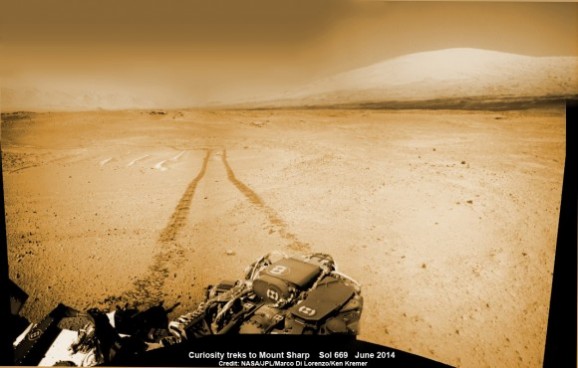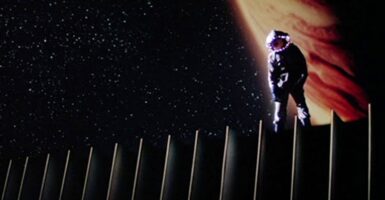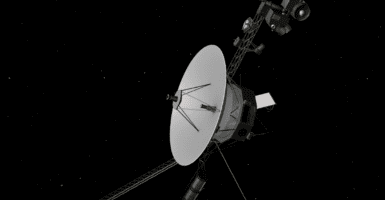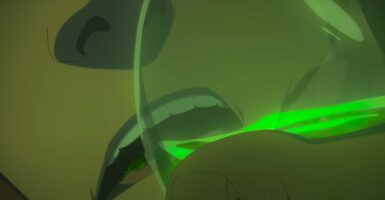Curiosity Celebrates Its Two-Year Anniversary On Mars
This article is more than 2 years old
 How time flies. Can you believe the Curiosity Rover has been on Mars for two years already? Sure, Opportunity’s got more than eight years on the younger probe, but age isn’t everything. Curiosity has provided us with information about water on Mars as well as a dramatic landing. And now it’s getting ready to climb Mount Sharp, its main destination.
How time flies. Can you believe the Curiosity Rover has been on Mars for two years already? Sure, Opportunity’s got more than eight years on the younger probe, but age isn’t everything. Curiosity has provided us with information about water on Mars as well as a dramatic landing. And now it’s getting ready to climb Mount Sharp, its main destination.
Mount Sharp is no joke—at 3.4 miles high, it makes Mount Rainier look small. The peak is so massive that the bedrock at its base extends for miles, forming an area called Pahrump Hills. What a great name. Curiosity is less than a mile away from this area, which will give the probe, as well as scientists, the first glimpse at whatever kind of geological structures form the mountain. Curiosity is approximately 2 miles from the mountain itself.
Curiosity landed in Gale Crater because of its proximity to Mount Sharp, and scientists believed it provided the best chance at finding evidence of microbial life. Sedimentary rocks with clay are the holy grail, as the minerals they contain, phyllosilicates, would go a long way to providing the existence of microbial life. It didn’t take Curiosity long to find these minerals, though—it actually found phyllosilicates back in the spring of 2013 when it drilled into an outcrop of rocks in an area called Yellowknife Bay. Analysis of those rocks indicated that billions of years ago, there was a lakebed that had “all of the key elemental ingredients for life.”
Curiosity hasn’t had to go very far to answer the question of habitability, which makes scientists particularly excited to see what it finds when it enters the area previously thought to contain most of that evidence. Perhaps even more importantly, Curiosity’s mission paves the way for the next one, a rover scheduled to arrive at Mars in 2020 which will help set the stage for human colonists. That rover will have a similar structure and landing apparatus, and NASA can only hope that mission is half as successful as Curiosity’s has been. Here’s to an extraordinary third year on the red planet!












